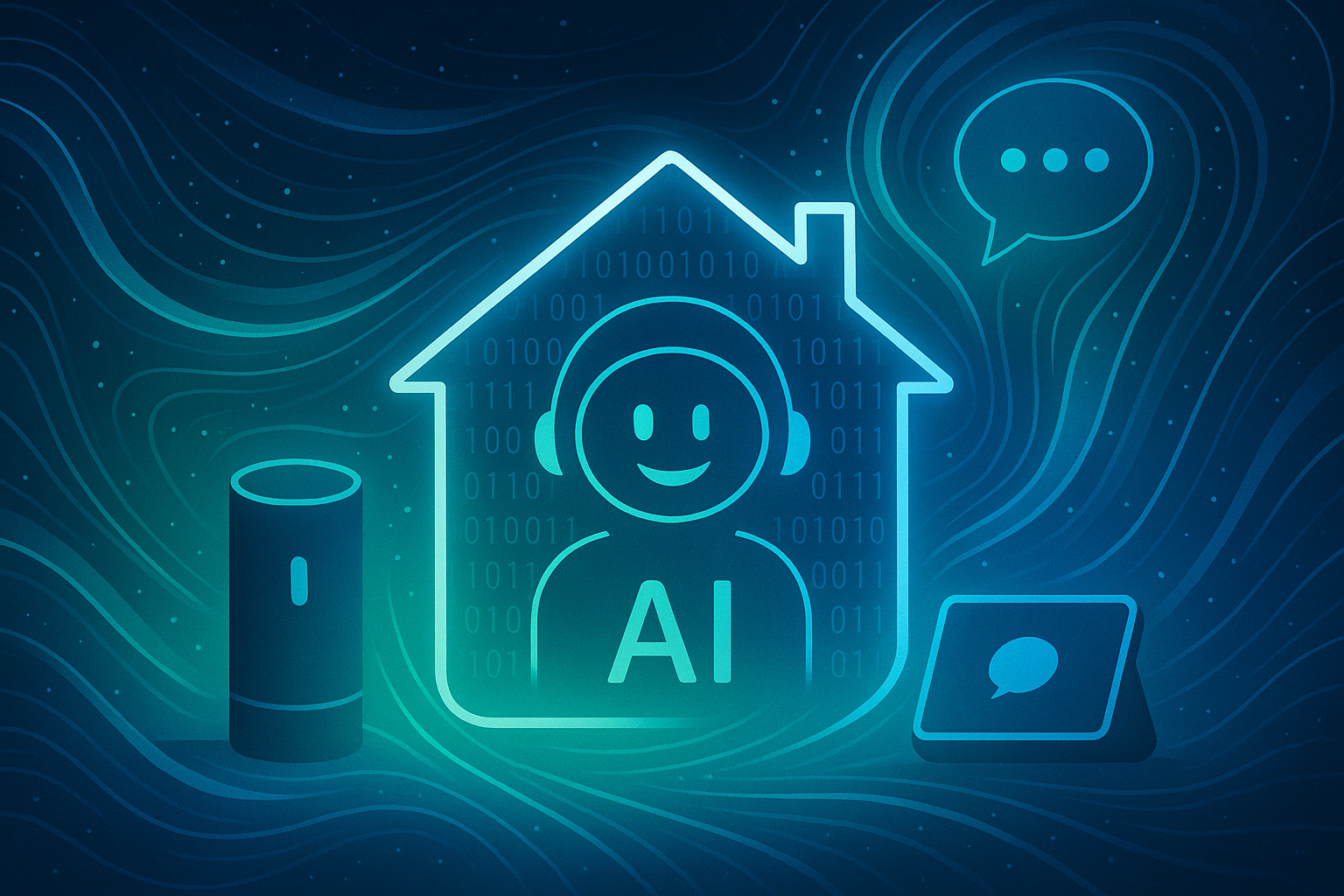In 2025, AI home assistants have evolved from simple voice-command speakers into comprehensive control centers. Powered by machine learning, natural language processing, and sensors, these devices deliver personalized and proactive assistance by learning your routines and anticipating your needs. The global smart home market is projected to reach $184 billion by 2026, and AI-driven helpers are a major part of that growth. They use similar technologies to those found in advanced security systems to understand context and adapt to you, making daily life more convenient.
Amazon Echo Show 15 – Large display & Visual ID
Amazon’s wall-mounted Echo Show 15 pairs a 15.6 inch smart display with Alexa voice control. The device doubles as a Fire TV with a customizable home screen that can show calendars, reminders, to‑do lists, and video feeds. A built‑in visual‑ID camera recognizes each household member, adjusting what information appears when they walk into view. Local voice processing allows for faster responses and greater privacy. The Echo Show 15 also includes a Zigbee/Matter smart‑home hub to control lights, thermostats, and cameras without extra hubs. Together, these features turn the Echo Show 15 into a personalized information hub and controller.
Google Nest Hub Max – Face Match & Gestures
Google’s Nest Hub Max includes a 10 inch touchscreen, integrated camera, and far‑field microphones to deliver Google Assistant in every room. Its Face Match technology uses on‑device processing to recognize individual users and display personal reminders, commute times, or YouTube recommendations when they approach. The built‑in camera supports group video calls and security monitoring. A new Quick Gestures feature lets you pause music or silence alarms simply by raising your hand. Because Nest Hub Max acts as a Thread and Matter controller, it can manage compatible devices like lights, thermostats, and smart locks.
Apple HomePod (2nd Gen) with Emotional Intelligence – Adaptive audio & mood detection
Apple’s updated HomePod combines high‑fidelity sound with a new S7 chip that uses machine learning to analyze your room and voice. The speaker adjusts its audio profile to suit the space and can sense changes in temperature and humidity. Apple’s latest software focuses on “emotional intelligence”: the HomePod listens for subtle cues in your voice—tone, volume, pace—to infer mood and adjust responses accordingly. It can deliver softer lighting or calming playlists when you sound stressed, or upbeat music when you’re happy. Integration with the Home app, Thread networking, and Matter ensures compatibility with a wide range of accessories.
Josh.ai – Privacy‑focused Natural Language Assistant
Josh.ai is a premium voice-assistant system designed for luxury smart homes. Unlike mainstream assistants, Josh interprets complex, natural sentences (“Raise the shades halfway and play jazz in the living room”) and can handle multi-command queries. It runs locally within the home for faster responses and improved privacy, using on-device machine learning rather than cloud-based voice analysis. Josh.ai integrates with control systems like Crestron and Lutron as well as major smart-device brands. The company emphasizes privacy, promising that voice data stays local and is never sold for advertising.
Samsung SmartThings Station & Hub – Unified control platform
Samsung’s SmartThings ecosystem is built around its SmartThings Station and Smart Hub. The Station is a small wireless charging pad that doubles as a Matter/Thread hub for your home. It works alongside the SmartThings mobile app and Bixby voice assistant to control Zigbee, Z‑Wave, Wi-Fi, and Matter devices. Samsung also offers a high-quality SmartThings Speaker that combines a wireless audio system with hub functions. Its Ambient Mode displays weather and calendar information, while built‑in microphones allow hands‑free voice control. Because SmartThings supports multiple protocols, it can unify devices across brands into a single interface.
Conclusion and next steps
AI home assistants are rapidly becoming the nerve centers of smart homes. Powered by the same machine-learning, natural-language, and sensor technologies driving the wider smart-home market, they learn our routines and adapt to our preferences. Whether you choose Amazon, Google, Apple, Josh.ai, or Samsung, these assistants can control lights, adjust thermostats, answer questions, and even sense your mood. Over time they will only grow more autonomous and integrated. Be sure to check our upcoming guides on connecting these assistants to your favorite
Top AI Home Assistants: Get Yours Today
- Google Nest Hub Max – https://www.amazon.com/s?k=Google+Nest+Hub+Max&tag=smartabodeai-20
- Apple HomePod (2nd Gen) – https://www.amazon.com/s?k=Apple+HomePod+2nd+Gen&tag=smartabodeai-20
- Samsung SmartThings Station & Hub – https://www.amazon.com/s?k=Samsung+SmartThings+Station+Hub&tag=smartabodeai-20
- Josh.ai Home Intelligence – https://www.amazon.com/s?k=Josh.ai+home+intelligence&tag=smartabodeai-20
smart-home devices and how to earn commissions through affiliate partnerships by recommending them.
